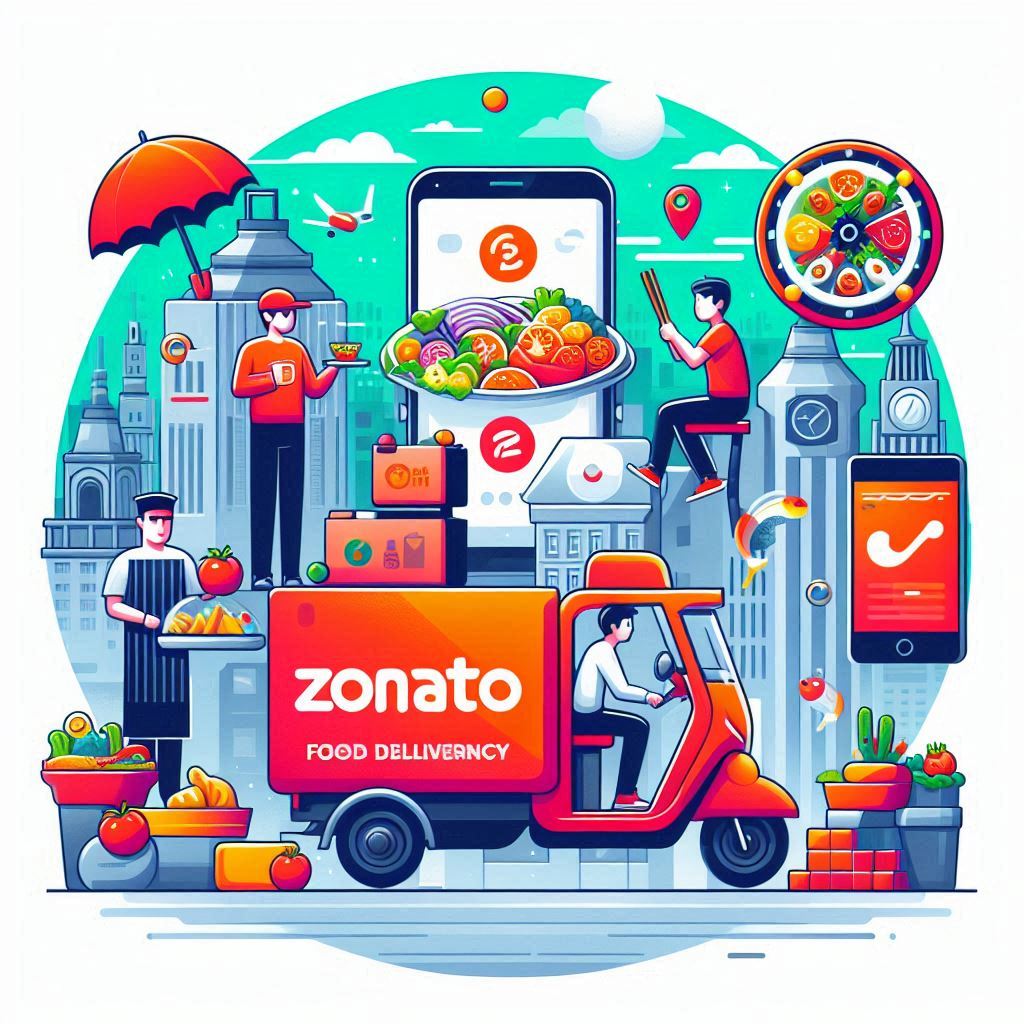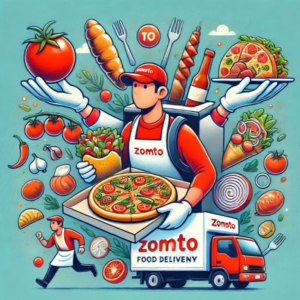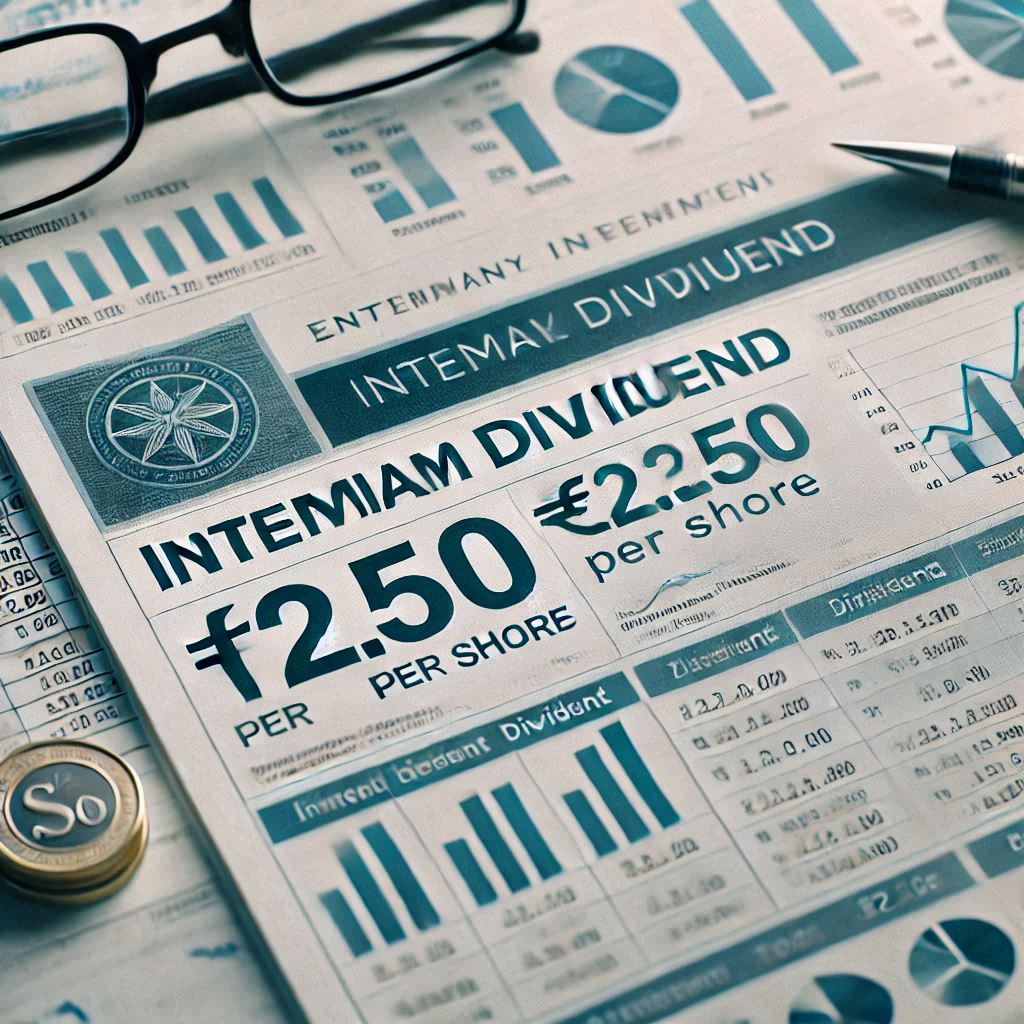Zomato’s stock drops more than 7% due to a slowdown in the food industry and a PAT decline
After Zomato admitted to a slowdown in its meal delivery business and posted lower-than-expected December quarter results, the company’s shares fell more than 7% on Monday, closing the day at Rs 230.70 on the NSE.
Zomato’s Stock Drops More Than 7%: What Lies Ahead?

“We have a longer-term growth target of 20%+ YoY GOV for the food delivery industry. Along the journey, there will be times when progress is slower and slower.
We are currently seeing a widespread slowdown in demand that began in the latter part of November. Zomato’s letter to shareholders stated, “Despite the current slowdown, we are optimistic about a recovery soon and remain confident of the long-term outlook of 20%+ yearly GOV growth in the business given the strong fundamentals.”
PAT decrease and food industry slowdown caused Zomato shares to drop more than 7%.
On Monday, the meal delivery business said that its December quarter consolidated net profit had dropped 57% to Rs 59 crore from Rs 138 crore in the same period last year. Compared to the Rs 176 crore reported in Q2FY25, the profit after tax (PAT) decreased by 66% on a sequential basis.When the earnings were revealed at the close of Monday’s trading session, there was a sell-off in the midst of massive volumes. More than 10 crore shares were traded on the NSE at the close of business.
Q3FY25’s operating revenue was Rs 5,405 crore, a 64% increase over the previous fiscal year’s comparable quarter’s revenue of Rs 3,288 crore.
On a sequential basis, the topline was 13% higher than the Rs 4,799 crore recorded during the July–September quarter.
In Q3FY25, Zomato’s gross order value (GOV) for B2C businesses increased by 14% QoQ and 57% YoY to Rs 20,206 crore. Consolidated adjusted profits before interest, taxes, depreciation, and amortization (EBITDA) increased 128% year over year to Rs 285 crore in Q3FY25. This growth was mostly due to the food delivery adjusted EBITDA margin (as a percentage of GOV) improving to 4.3% from 3% in the previous year.
Despite the rise in food delivery margins, consolidated adjusted EBITDA fell 14%, or Rs 45 crore, on a quarter-over-quarter basis. Rapid expenditures in growing Zomato’s network of fast commerce stores were blamed by the firm for the deficit, which saw quarterly losses rise by Rs 95 crore QoQ.
Is the Zomato stock at a 44% decline? Macquarie’s target price for shares
If Macquarie’s new target price on the company after Q3 data is taken into account, Zomato Ltd. shares, which have already down 17% in 2025, might drop another 44%.
It claimed that due to investments in Blinkit and increased staff costs, Zomato’s December quarter results fell short of both expectations and the consensus.
According to Macquarie, the consensus predicts that Blinkit’s gross order value (GOV) would rise 3.5 times to $11 billion during FY25–28e, and that the adjusted EBITDA margin, or percentage of GOV, will climb from minus 1.3% to 3.5%.
“In the face of hyper-competition, we continue to flag material downside risk particularly to this margin expansion assumption, whilst even noting scope for a prolonged period of negative margins,” concluded the report.
The food delivery sector is expected to experience a slight decline compared to the consensus estimate of a 4.5–5% adjusted EBITDA margin for FY26–28 and a 20% 3-year GOV CAGR.
According to Macquarie, Zomato is a speedy and effective platform for food delivery and commerce. However, we see little margin of safety for the shares. Growing competition in rapid commerce is impacting consensus estimates. Macquarie stated that its Rs 130 DCF-based price estimate translates to 55 times FY27 PE (treasury income adjusted).
Due to a robust MTU addition, Zomato’s GOV in rapid commerce expanded 120% year over year in the third quarter, exceeding Macquarie’s projections. However, this was probably caused by increased marketing expenditures, which led to an adjusted EBITDA Margin of negative 1.3% of GOV, below the expected breakeven point.
In Q3, Blinkit added 216 dark shops. As of December 31, it has 1,007 shops in total. The Zomato management pushed back their initial projection of 2,000 outlets from December 2026 to December 2025. In the food delivery sector, MTU had a little QoQ dip to 20.5 million, while GOV gained 17% YoY, a miss. The adjusted EBITDA margin grew by 75 basis points on a quarterly basis (4.3 percent of GOV).
At Rs 216.15, Zomato is down -10.29% from its previous closing price. Zomato has been fluctuating between 227.05 and 210.15. This year, Zomato has given -13.77%, and in the last five days, it has given 5.55%.
Compared to the sector P/E of 64.20, Zomato’s TTM P/E ratio is 366.74.Twenty-five analysts have started covering Zomato. Eight analysts have rated it as a buy, while fourteen experts have rated it as a strong buy. The stock has been rated as a sell by two analysts.
In its most recent quarter, the company reported a net profit of 59.00 crores. Zomato’s listed competitors include Info Edge India (-3.83%), Wipro (-0.33%), and Zomato (-10.29%).
As of December 31, 2024, Zomato’s mutual fund holdings stood at 16.42%. Compared to the previous quarter, the MF holding has grown. The FII’s stake in Zomato was at 47.31% on December 31, 2024. Compared to the previous quarter, the FII holding has dropped.
Is it time to sell or buy?
In response to the fast development of its stores to handle orders from its quick-commerce service, Blinkit, Zomato reported on Monday that its consolidated net profit for the December quarter dropped by 57.2% to ₹59 crore. The firm posted a net profit of ₹138 crore during the same time previous year.
Due to a general “demand slowdown,” Zomato’s food delivery income increased by 2% on a quarterly basis and by 17% on an annual basis, according to a letter to its shareholders.
In comparison to ₹3,288 crore in the December quarter of the previous fiscal year, the company’s consolidated revenue from operations increased to ₹5,405 crore. Additionally, overall costs increased from ₹3,383 crore to ₹5,533 crore in 2023–2024.
Disclaimer: The information in the aforementioned article is news and educational in nature; it is not a suggestion for a purchase or sale. Before making any financial decisions, users are advised by TraderPulse to consult with qualified professionals.




